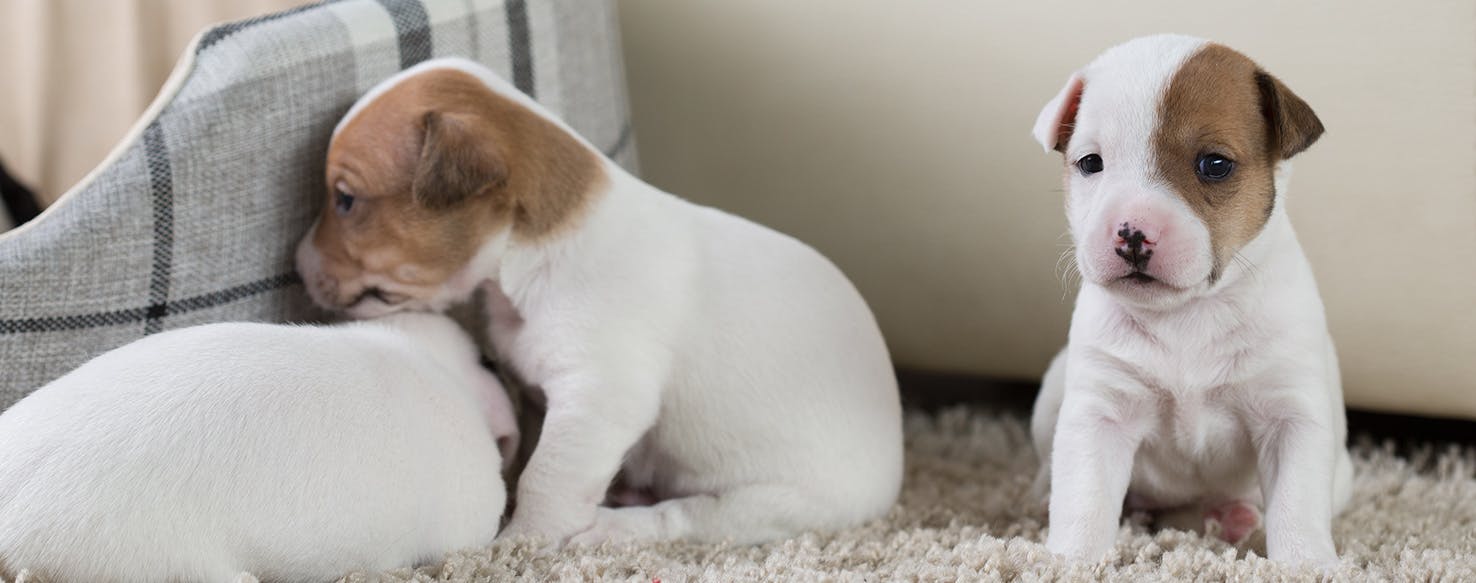The Death Of how To Prevent Dog From Licking Wound And How To Avoid It

We've discovered this great article on Pets listed below on the web and figured it made sense to discuss it with you on this page.
Your One Stop For All Your Dogs Questions
Who doesn't love having a dog? The attention they give you is second to none. The friendship they provide is stronger than most. That's why you have to pay your dog back and make sure that you are doing everything you can for him. Here are some suggestions about how you can do the best for your dog.
If you are thinking about adopting a dog, try taking a couple of weeks off work so you can spend some time with your puppy and teach it a few good habits. Training your puppy and helping it get used to its new environment will be much easier if you are home.
If your dog comes with you on vacations, you need to have an up-to-date picture of it on hand and in your phone. This allows you to have a photo of him if he gets lost.
Avoid the bargain brands of pet food. The brands that are cheaper have preservatives, additives, as well as other things that aren't good for your dog. Check out professional recommendations from groups online. Your dog will be much healthier if you feed it some healthy food.
Keep your dog warm during winter with the latest in canine fashion and accessories. You may think it's just for show, but dogs need protection from the elements too! Keeping your dog's paw-pads dry is essential to their health in sub-freezing weather, so invest in suede or leather footwear and pick him up a coat while you're at it. Make them instead if you are creative!
When choosing a dog for your home, don't forget to estimate the size it will be as a full grown adult. This is especially true if you have small children at home. Although a small puppy will be cute, it may grow into a large, one hundred pound dog. Do some research on the average adult size of the breeds you are considering.
If you breed your dog, do so responsibly. The AKC advises all owners of pure-bred dogs to make an effort to advance the breed and discard all other motivations, such as money or experimentation. Consider the repercussions of your actions before allowing your dog to mate and create a litter of puppies.
Unless you're okay with your dog playing with your shoes and other things around your home, buy him some toys. He will enjoy having things of his own, particularly if they are interactive like pull-toys you can use together. Also buy him things he can use to occupy himself and stay out of trouble!
Be clear with your pet during training. The word "no" does not explain anything to your dog, other than that you are unhappy with something. Instead, explain which behavior you do want to see. For example, if your dog jumps on the furniture, tell him to get down instead of just saying the word no.
The pads of your dog's feet can become dry and cracked, so make sure that you moisturize them regularly. Ask your veterinarian for advice on which product to use. Avoid using moisturizers that are intended for humans, because they can make the pads too soft and your dog may get hurt.
Always be sure that your dog understands that you are the master if you want to have a well behaved pet. This is important because if your dog believes that he is dominant over you, then you have a much smaller chance of getting it to obey your commands and behave according to your wishes.
If you are planning on getting a new puppy, plan on investing in some training classes. These classes offer a great opportunity for your puppy to socialize with other dogs and learn basic commands. These classes will provide your new puppy with a great foundation for future training and will help them get a great start in life.
When the weather outdoors become hotter, you need to search for ticks and fleas on your dog each day. Try to get rid of any fleas by using what is called a flea comb. There are many products out there that can help you control your dog's ticks and fleas. Speak with your vet about which choices are best.
If you are training your dog, make sure the treat you are giving him really is desirable. Pets have preferences too, and if your dog does not like the treat you are providing, there is not going to be much motivation to do the right thing. Try out a few different brands, and remember that soft, chewy treats are generally the most well-received.
Your dog needs shelter from the sun in the summertime. You should not let your dog outside for too long unless there are a few cool spots in which your dog can be shielded from the sun. You should also make sure your dog always has access to some cool water and.
If your dog suffers from constipation or diarrhea, you can try feeding the pet canned pumpkin. This is not same as pumpkin pie filling. Pumpkin contains fiber which helps with constipation. In addition, it also absorbs water which helps with diarrhea. Don't give the dog much, just a teaspoon or two with the dog's regular meal.
Never punish your dog for being curious about a new baby. Instead, allow your dog to investigate the smells and sights that come with a baby at a safe distance. If the dog is made to feel like the baby has infringed on his home, the very worst is far more likely to happen.
Never leave your dog inside your vehicle. Remember that your dog needs supervision and that it could become dehydrated very quickly, especially during the hot summer months. It is best to leave your dog at home for a few hours if you have to go somewhere and cannot take your dog inside.
All of these hints are now at your fingertips, so it is time to make use of them. Take them each, one by one, and start using them every day. The more you change about your dog's life, the better it will be overall. A happy dog makes for a happy owner, after all!
Best Advice for Dogs with Skin Issues
I still need to publish a real post about Mr. Stix's full backstory, but this feels more pressing. For nearly 18 months, Mr. Stix's permanent nakey spot (from unknown injuries before he was rescued, including 15 fractures and this big patch of coat missing) has featured several inflamed, peeling areas. Initially I tried to fix it myself at home with things like aloe vera, vaseline, a veterinary ointment called animax that the shelter had give us while we fostered him most of 2019, etc. how do i keep my dog from licking a wound of a combination of steroids, antibacterial, and antifungal stuff. I took him to see our main veterinarian in spring 2020, when there was a 2-month wait to get into see a board-certified veterinary dermatologist. It has been quite a journey since then, and it's nowhere near over. Here's my best advice for dogs with skin issues.
Before I tell the ongoing saga with Mr. Stix's skin. Here is my best advice for dogs with skin problems.
See a board-certified veterinary dermatologist as soon as you can. Yes, your main veterinarian can probably help, but it's honestly best to go right to the top experts.
Agree to whatever skin scrapings / cytology the veterinary dermatologist recommends. This provides information about what types of secondary infections currently grow on your dog's damaged skin.
Do NOT assume every skin issue is allergies. It often is some sort of allergic process, but NOT always and assuming so (and acting accordingly may only delay real solutions and subject your dog to all kinds of quack advice and home remedies).
Buy the best quality fish oil and Vitamin E supplements you can afford, if it's recommended for your particular case of a dog with skin issues.
When necessary, agree to the skin biopsies (yes, like minor surgery) and have them reviewed by a veterinary pathologist that specializes in dogs with skin issues. The one we used is at Texas A&M.
Follow your veterinary dermatologist's advice and plans, and keep the faith. These dogs with skin problems often don't improve quickly. (I need to take my own advise. See below.)
Mr. Stix's Story as a Dog with Skin Problems
This is what Mr. Stix's nakey spot looks like when it's normal. check out this blog from May 2019 soon after his hip surgery. The bald patch is permanent. That's not the issue.
This is how bad the red / peeling areas got in mid-2020 when we saw our main veterinarian, who added a low-dose of oral Vitamin E and some topical too and told me to keep using the animax.
This is how it looked when Mr. Stix first saw the board-certified veterinary dermatologist in early August 2020, but the specialist had me STOP the animax and instead use a prescription anti-bacterial ointment (mupirocin) ... as well as add a better quality oral fish oil and continue both topical and oral Vitamin E (but at a higher dose twice a day). We knew from the skin scrapings / cytology they did onsite that Mr. Stix had a bacterial infection.
But, without the daily topical steroids (which long term are a bad idea), Mr. Stix's skin got much, much worse -- even breaking open and scabbing over.
Our veterinary dermatologist had recommended doing the skin biopsies right away in August 2020, and I *almost agreed to it then, but I was VERY worried about the cuts resulting in skin that would NOT heal. And, I figured it was at least worth a try to use the prescription antibiotic ointment and other supplements and stuff.

But, by around Thanksgiving, it was clear we had to do the biopsy. That photo is kind of gruesome, so you can see it here, if you want. I wish I had done the biopsy sooner. I feel like I wasted time from August through November.
Post-Biopsy Diagnosis
As I expected, despite all the know-it-alls trying to tell me it was an allergic issue, it turns out that Mr. Stix instead has an autoimmune condition called erythema multiforme. They believe it was triggered by the trauma of his earlier injuries. They don't think it is life-threatening. They don't think it will spread to other areas of his skin. Just the already damaged, permanent nakey spot.
With that information in hand, we updated the treatment plan to include a topical, non-steroidal anti-inflammatory ointment (tacrolimus -- often pricey, but we used a Good RX coupon at Costco to get the cost down). They use a version of this medication orally for people who have had various kinds of transplants. It's the smallest / safest option for treatment, and that's where we started.
I was so hopeful it would work at the once-daily application, but the skin still didn't heal completely.
So, in early 2021, we started applying it twice daily on the advice of our veterinary dermatologist.
But, it still hasn't healed completely. It often improves a lot and then comes roaring back, so we had another appointment to see the specialist last week. We had to try something new.
Enter the Big Immune-Suppressing Drug
Despite my concerns and form of veterinary PTSD about major immune suppression drugs (after our experiences with Lilly), I agreed last week to add oral cyclosporine, which is also a drug that people get after various transplants. Mr. Stix would need to take it daily for life.
It smells like it's made from skunk butts, so each gel-cap pill is individually packaged, and you keep them in the freezer because that can help with nausea it can cause (since it's recommended you give on an empty stomach).
I found some good info on this med, and our veterinary dermatologist assured me that it has been safely used in veterinary medicine for like 20+ years, etc.
The med only comes in doses of 25 mg, 50 mg, and 100 mg, and at his size Mr. Stix's ideal dose is around 88 mg once a day. So we went with 75 mg (25+50) to err on the lower side.
It takes like 3-7 days for the med to build up in the blood to therapeutic levels, but it takes more like 4-6 weeks to know if it's going to help the skin (or not).
We made it to day 4, then the barfing started.
Anxiety
I wish I could say that this is all going to be fine, but I just don't know. I feel like I just have to accept that the skin will never fully heal, even though seeing his raw spots up close while applying the topical med twice a day and topical Vitamin E once a day causes me so much angst and anxiety.
I supposed to check in with our veterinary dermatology team next week to confirm that Mr. Stix's weirdness and apparent suffering has improved.
It took a lot of convincing to get Mr. Champion of My Heart to agree to try the cyclosporine, so even if the specialist comes back and recommends maybe a lower dose, I doubt we'll want to risk it ... because Mr. Stix sure seemed to be having some neurologist issues to me, and after the Lilly situation, I just cannot do that again.
He is only 3 years old. I don't want to make anything worse. It honestly felt like I'd poisoned him.
The good news is that most of the time his skin doesn't seem to hurt or itch or anything -- though I do have pain meds, if he needs them. It mostly just looks bad, and he has to wear a no-lick collar for about 20 minutes after I apply his meds so that he doesn't lick it off.
His nakey spot is prone to sunburn anyway, and the topical tacrolimus increases the risk of burning, so I used his earlier sun-reflecting coat (which started to look ragged) as a pattern and sewed him a new / light sun protection coat. He looks very cute in it.
https://championofmyheart.com/2021/08/05/dogs-with-skin-issues/
I'm very interested by Dogs and I'm hoping you liked the page. In case you enjoyed reading our page plz consider to pass it around. Kudos for being here. Come back soon.
